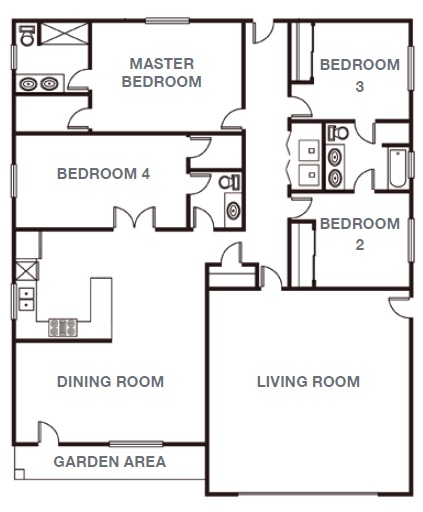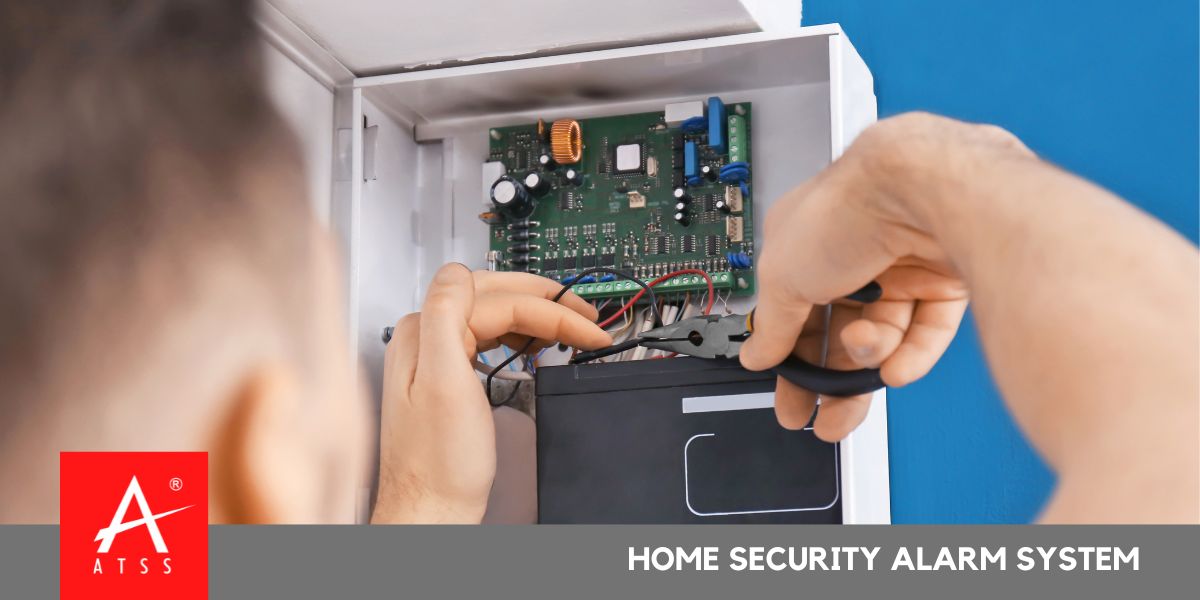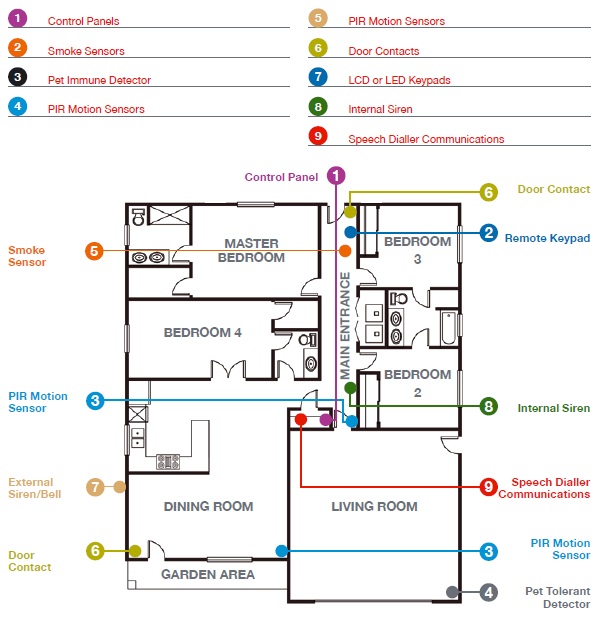Home Security Alarm System – How to Plan and Install an Intruder Alarm
PART 1
What is a Home Security Alarm System?
A Home Security Alarm System monitors and detects unauthorized entry to properties – both residential and commercial – and alerts the property owner or authorized third parties to an intrusion. For electrical installers, offering home security alarm system installation as an additional service alongside other electrical work can generate a lucrative revenue stream.
Why Install a Home Security Alarm System?
Although statistics show that burglary rates have been dropping, many properties still lack adequate security measures. The best deterrent for burglars is a home security alarm system, which can be installed cost-effectively while providing homeowners and business owners peace of mind.
Only around 10% of residential properties in India are protected by an intruder alarm system. By offering home security alarm system installation, you can significantly grow your business and increase your profits.
Did You Know?
- Homes and businesses without a home security alarm system are 10 times more likely to be burgled.
- Properties without a burglar alarm are three times more likely to be broken into.
- Around 20% of burglaries occur without forced entry, as burglars take advantage of open windows and easy access points.
- Visible home security alarm systems make intruders think twice, acting as both a deterrent and an alert system.
Components of a Home Security Alarm System
A home security alarm system consists of detectors, control panels, and communication devices.
Detectors
Detectors identify and respond to security threats such as movement, shock, vibration, smoke, heat, and flood. The types of detectors include:
- Passive Infrared Sensors (PIRs) – Detect movement using infrared heat sensing.
- Dual Technology Sensors – Combine infrared and microwave sensing to reduce false alarms.
- Magnetic Door Contacts – Detect the opening and closing of doors and windows.
- Glass Break Sensors – Detect the sound of breaking glass.
- Shock Sensors – Detect forced entry attempts on doors and windows.
- Smoke Sensors – Can be integrated into the home security alarm system for fire detection.
Control Panel
The control panel acts as the brain of the home security alarm system, analyzing signals from detectors and managing system operations. It is typically operated via a keypad, which may be:
- Integrated into the control panel (e.g., Optima Compact).
- Remote LED Keypad – Uses LED indicators to display alarm status.
- Remote LCD Keypad – Provides detailed status updates, event logs, and user entry/exit records.
Key features to consider in a control panel:
- Number of zones to protect.
- Ability to arm/disarm specific areas of the system.
- Number of additional remote keypads.
- Event memory log, panic alarm, and tamper detection.
Activation & Alerts
- Upon alarm activation, keypads identify the problem and alert occupants.
- Sounders & Sirens
- Use different tones and rhythms to indicate alarm types.
- Externally mounted sirens act as a visual deterrent.
- Strobe lights help identify the alarm location.
- Communication Devices
- Speech Dialers send pre-recorded messages to designated contacts via landline or mobile.
- Ideal for isolated properties and when homeowners are away.
Planning and Installing a Home Security Alarm System
Step 1: Conduct a Site Survey with the Customer
To ensure the correct home security alarm system is installed, conduct a detailed site survey in consultation with the customer. Consider the following:
Site Survey Questions:
- Is the property isolated or in a built-up area?
- What areas need protection? (Entire property or specific zones?)
- How many entry doors require protection?
- Is fire detection also needed?
- How many zones are required?
- What type of keypad is preferred? (Integrated, LED, or LCD?)
- Are additional keypads needed?
- Where should the control panel be installed?
- Should window protection be included?
- How many rooms require motion detectors?
- Are there pets that remain inside while the system is armed?
- What type of alert is preferred? (Sound, visual, remote communication?)
- Where should the external siren be placed?
- Is a dummy siren required?
- Should keyfob operation be included?
By addressing these questions, you can design and install a home security alarm system tailored to the customer’s needs, ensuring maximum protection and peace of mind.
Step 2: Map out the property and select products
Using the information you have obtained during the site survey, map out property layout and select the most appropriate products for the installation.
Step 3: Decide where to position the Intruder alarm system components

YOU ARE NOW IN A POSITION WHERE YOU CAN START THE INSTALLATION OF THE INTRUDER ALARM SYSTEM.
PART 2
The first part of this guide gave you intruder alarm basics, including the benefits of intruder alarms, main intruder alarm system components and how to plan and lay out an intruder alarm system.
Part two will help you to correctly position, install and commission the components of an intruder alarm system as well as giving you some visual hints and tips on best practice and how to avoid common pitfalls and mistakes.
Positioning and Installing the Intruder Alarm System Components
POSITIONING
a) For control panels with onboard keyboards should be installed near the main access point in a convenient location for mains electricity supply and for user operation.
b) For control panels which are operated using remote keypads, the panel can be concealed inside a cupboard or loft space in a convenient location for mains electricity supply and it makes the cabling to the sounder much easier.
BEST PRACTICE
It is best to install the control panel first
HINTS AND TIPS
a) Check the panel voltage to ensure that the control panel has power. REMEMBER to disconnect power before proceeding with the installation of peripherals
b) Remember to link out any zones that you are not using, you need to use a wire link across the Unused zones
c) The stand by battery can take several hours to charge up so it is a good idea to charge batteries before commencing the installation
2. Remote LCD Keypads
POSITIONING
Mount in a convenient location which allows easy operation for the system users, typically close to the main door, back door and master bedroom.
HINTS AND TIPS
a) Remember to check that the tamper spring on the keypads is closed
b) It is recommended to use the tamper spring whenever the keypad is mounted against a wall so that it is triggered if an attempt is made to remove it.
3. PIR Motion Sensors
POSITIONING
a) Install the sensor at a height of 2.3m-2.7m.
b) Avoid direct or reflected sunlight remembering that the sun moves around during the year!
c) Position the sensor away from windows and heating/ cooling devices such as radiators and fans.
d) The sensor must have a clear line of sight to the protection area.
How to avoid the common mistakes with installing PIRs
a) Where the PIR has a look down or “sneak” zone, ensure that this is not obstructed
b) Pay attention to avoid blind spots when positioning sensors
c) Always adjust the sensitivity of each sensor once it is mounted, taking into consideration the lighting, the proximity to radiators, windows, mirrors and other xternal influences.
d) Tamper switches often cause problems. If you are using the tamper switch ensure that the tamper switch is closed. If you are not installing the tamper circuit (not advised) you need to ensure that the tamper circuit is linked out at the control panel.
HINTS AND TIPS
a) If wall is not square you may need to alter the state of the plastic to make sure when mounting that you hear the tamper spring “click”, closing the circuit
b) Using the black jumper, you can easily set the red LED light to ON or OFF as indicated below. This is particularly useful in living rooms where the LED flashing on and offcould be distracting
c) Allow up to one minute for the PIR to calibrate itself
4. Pet Tolerant Detectors
POSITIONING
a) Follow the instructions for positioning PIR motion sensors
b) Select correct pet tolerant setting using the black jumper
5. Smoke Sensors
POSITIONING
- Place in or just outside bedrooms or in the hallway close to any sleeping area. The top of the stairs is also a good place
HINTS AND TIPS
- Do NOT place smoke sensors in kitchens or bathroom
6. Door Contacts
POSITIONING
a) Mount the main part (part with connectors) on the fixed part of the door or window frame. Do not mount them further than 3” from the opening side of the door.
b) Mount the magnet on the mobile part of the door or window so that it is adjacent to the main part.
c) Ensure that the two parts are opposite each other and a small gap has been left.
HINTS AND TIPS
a) Ensure that wires are hidden so that they cannot be damaged.
b) Ensure that wires are hidden so that they cannot be Pleasenote that some Honeywell door contacts have two rather than five terminals
c) If there are only two screws, a tamper loop will need to be created by twisting the cables then insulating them with electrical tape.
d) Wrap the wire around the screw in a clockwise direction and tighten the screw for the best connection
7. External Sirens & Bells
POSITIONING
Install in a high location from which the strobe can be seen and the siren heard
HINTS AND TIPS
Ensure that the tamper is closed
8. Internal Siren
POSITIONING
Place in the centre of the home out of reach
9. Speech Dialler Communications
POSITIONING
a) Locate where it can be easily operated by system users and in a convenient location for connection to the phone line.
b) If possible, do not connect other telephone apparatus to the same line
BEST PRACTICE
a) Connect the speech dialler directly into the control panel
b) Once wired in, test that the dialler dials through before programming the pre-recorded alert messages according to trigger cause (e.g. intruder, fire, flood)
HOW TO AVOID THE COMMON MISTAKES WITH INSTALLING A SPEECH DIALLER
Ensure that the speech dialler is the first item on the telephone line i.e. the first “slave socket” to be connected
to the master socket (where more than one apparatus is unavoidable). This allows the speech dialler to “snatch the line” or disconnect any other call should it be triggered
Installation Advice and Best Practice
When installing an intruder alarm it is imperative that you follow the necessary Health and Safety requirements. Installation of the intruder alarm is straight forward provided that the installer is a qualified and experienced electrician.
GENERAL HINTS AND TIPS
a) Use multiple core alarm cable and decide at the outset which colours you will use – Convention suggests red is live (+12V) and black is negative (0 Volts).
b) Remember to “tin” the wire.
c) Do not over tighten the screw on the connector block as this can shear the wire.
d) When using the global tamper circuit, this is a continuous loop through all zones (contacts, PIRs PA devices etc) so all tampers need to be wired
e) Do not work using live circuits
f) Run the wires to all the locations of the peripherals
g) Mount the control panel in the desired location
h) Mount the keypad on the wall in the location agreed with the customer
i) Wire up the peripherals (detectors, bell boxes, communication devices…etc)
j) Activate the power
k) Carry out a walk test and check the system is working
Once you have installed the Intruder alarm system and verified that all components of the system have power you need to commission the alarm.
Download Above Info as PDF : How-to-Plan-and-install-an-Intruder-Alarm
BURGLAR ALARM SYSTEMS : http://www.burglaralarm.in


